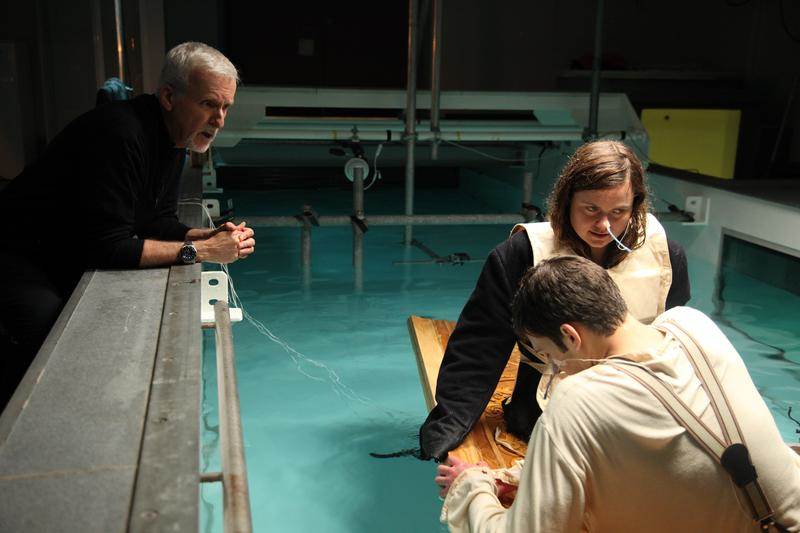Tragedy struck on April 14th, 1912, when the “unsinkable” Titanic hit an iceberg and sent all but around 700 of its 2,200 passengers to their watery graves. 85 years later, filmmaker James Cameron reinvigorated interest in the wreck with the blockbuster film Titanic. And now, 25 years after the film’s release, the man responsible for 3 of the top 5 highest grossing films of all time returns to see how close his film lives up to the science in Titanic: 25 Years Later with James Cameron, premiering tonight at 9/8c on National Geographic.
Did the Titanic sink the way it was portrayed in the film? If the Titanic had more lifeboats, could more lives have been spared? And could Jack have survived if he joined Rose on the floating piece of debris that saved her? These are the three questions James Cameron sets out to answer in this hour-long special. Put through scientific methods, a team of experts help answer each question.
To answer the first two questions, James Cameron consults with Nat Geo Explorer Dr. Robert Ballard, who famously discovered the wreck of Titanic in 1985; Don Lynch, author of Titanic: An Illustrated History; visual historian Ken Marschall; naval systems engineer Parks Stephenson; plus visual effects gurus Gene Warren III and Christopher Lee Warren. Computer simulations and a model help determine the varying ways that the ship could’ve broken apart to see if the climactic moment where Jack and Rose hang onto the stern of the ship as it sinks could’ve been accurate. Using a prop lifeboat from the film, which itself was a recreation of the real lifeboats, a team determines how long it would’ve taken to board and lower each lifeboat to see if more lives could’ve been saved in the short timeframe it took for Titanic to sink.
Splashy headlines have already emerged from the special declaring that Jack could’ve lived if he had joined Rose on the floating wooden panel that saved her life. While Jack and Rose are fictional characters, Rose’s survival was inspired by a Chinese passenger who was among the few living bodies recovered from the wreck, saved because he kept his core out of the water by climbing onto floating debris. With the help of two hypothermia experts, Professor James Cotter and Travis Gibbons from the University of Otago, NZ, James Cameron tries to recreate the scenario. With all that we now know about hypothermia, there is a scenario in which Jack could’ve survived, but it’s far from the given outcome that Tweets about the special would have you believe. And, as James Cameron repeatedly mentions, Jack and Rose are fictitious characters from his own imagination.
With Titanic about to set sail on another theatrical re-release on February 10th, this Nat Geo special highlights new information about the historical tragedy at the film’s center while trying to dispel any myths that have been called into question over its 25 years in existence. Whether you love the film or not, the special is exciting for the way it applies hard science to fan speculation.
Titanic: 25 Years Later with James Cameron premieres tonight at 9/8c on National Geographic. The special will be available to stream on Hulu beginning Monday, February 6th.
(Please note this article contains affiliate links. Your purchase will support LaughingPlace by providing us a small commission, but will not affect your pricing or user experience. Thank you.)

